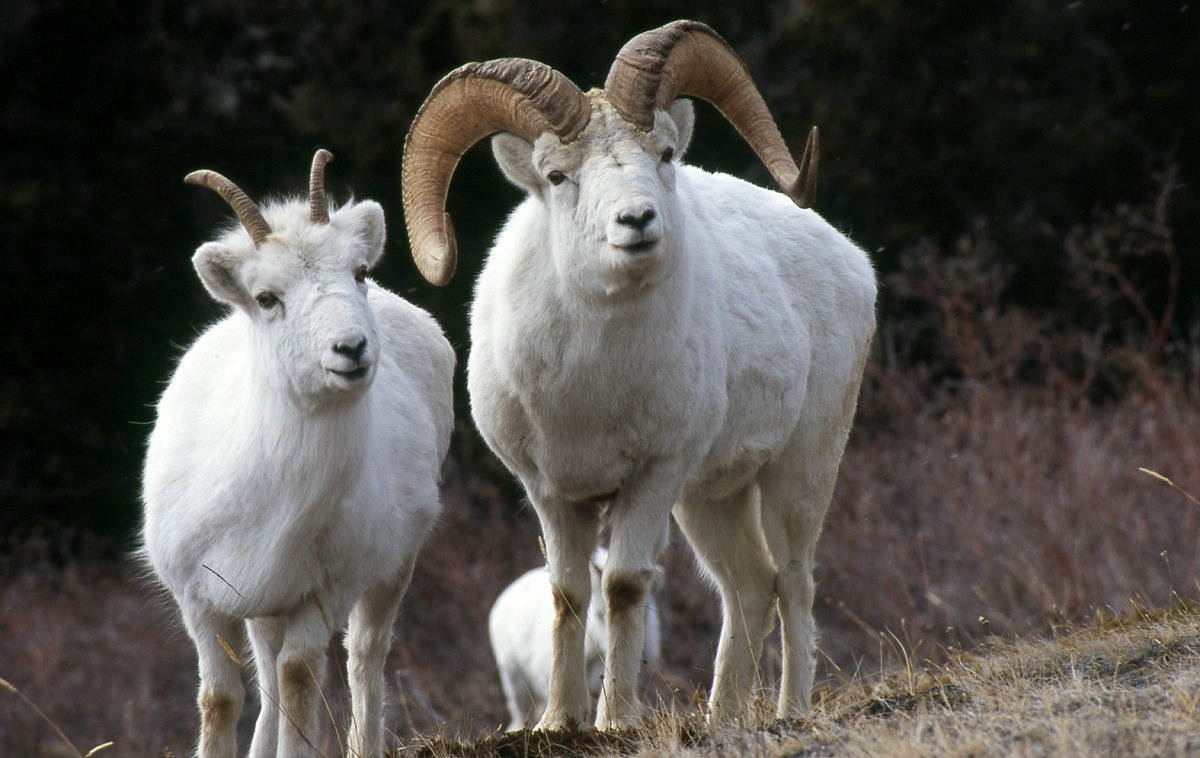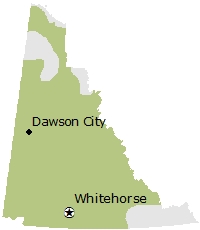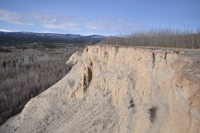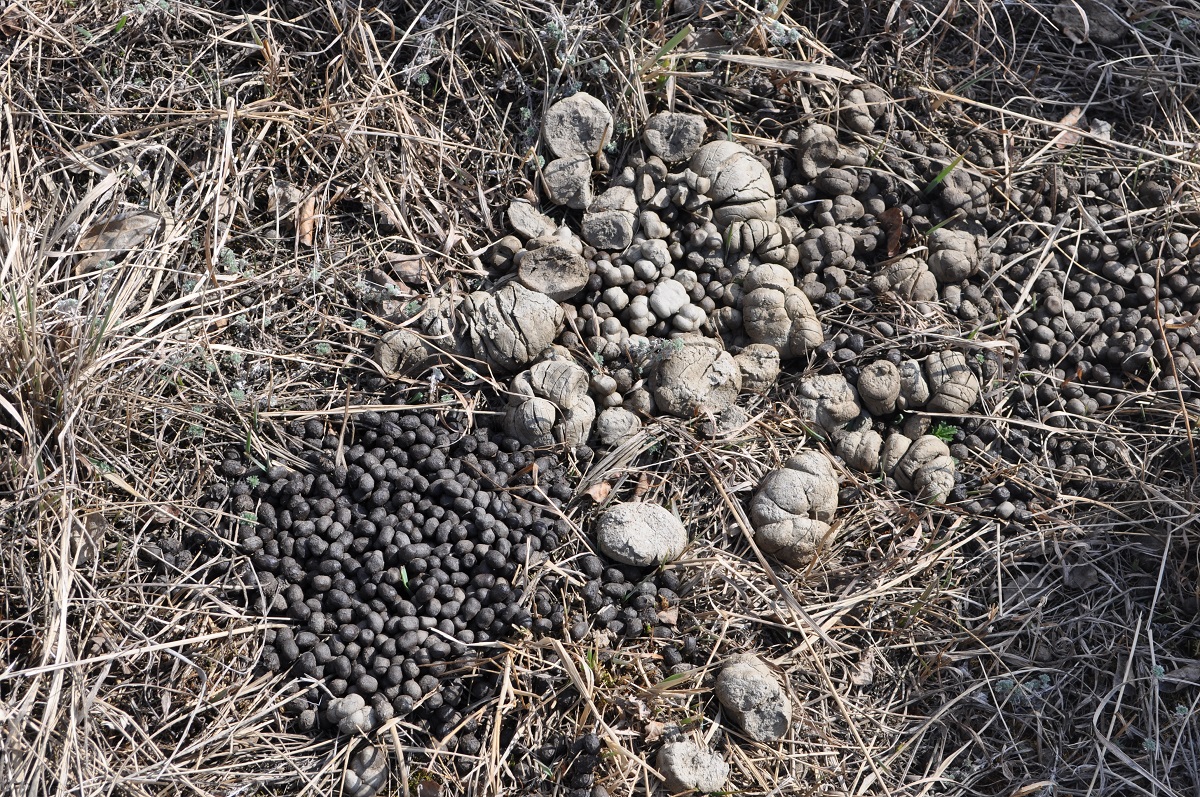
Name
- Common name: Thinhorn Sheep
- Scientific name: Ovis dalli
- Order: Artiodactyla
- Family: Bovidae
Also known as
Dall’s Sheep, Stone’s Sheep, Fannin’s Sheep
Viewing opportunities
- Sheep Mountain in Kluane National Park and Reserve is a population location for viewing Dall’s Sheep.
- Stone’s Sheep are found only in the absolute southern reach of the Yukon and into northern British Columbia in the Cassiar Mountains.
- Fannin’s Sheep can be found in areas of the central Yukon, particularly around Faro and Ross River, down to Teslin, in the Cassiar and Pelly mountains.
- Highway travellers can set up spotting scopes trained to south-facing slopes or alpine meadows for sneak peak at sheep. Keep an eye out for small patches of snow on the mountainside that suddenly start to move.
- Venturing into the alpine for a day hike will give you the greatest chance at seeing sheep. Bring your binoculars to have a look as it is best to not get too close.
Description
- Males have thick horns that grow larger and spiral with age.
- Female horns remain small and slender.
- Dall’s Sheep have all white fur with tan-coloured horns.
- Stone’s Sheep have dark grey or brown-to-charcoal colour fur.
- Fannin’s Sheep range from nearly white to dark brown. They typically have white faces and rumps with a tan-coloured backs that appear like a brown blanket has been draped over them.
- Note: hide colour is an indication but not a definitive method of discerning sub-species.
Fast facts
- Height: 1.5 m
- Weight: 46 to 110 kg
- Habitat: Mountain Alpine
- Lifespan: 14 years
- Predators: wolves, bears, Wolverines, Golden Eagles
Conservation status
- Yukon: S4 (Apparently Secure)
- Global: G5T4 (Secure/Sub-population Apparently Secure)
Yukon population estimate
- 20,000.
- Recently Fannin’s Sheep have been determined to be a hybrid between Stone’s Sheep and Dall’s Sheep. Population estimates and range maps have yet to be reassessed based on this information.
Behaviour
Thinhorn Sheep spend the summer grazing in alpine meadows atop the peaks. In the fall the sheep move to their winter range a few kilometres away where the wind keeps the snow shallow and the sun warms south facing slopes. They will use the same migration routes for generations and return to the same protective cliffs to give birth to their lambs every year
Diet
Grasses, twigs, leaves, buds, Pasture Sage.
Distribution

Sights and sounds

Dall's Sheep track: 14.8 x 6 cm.

Mineral licks.

Dall's Sheep scat: 0.8 cm long.
Sheep and people
- Thinhorn Sheep have long been prized for their delicious meat. First Nations would traditionally hunt sheep with bow and arrows or set snares along frequented travel routes. Sheep fleece was used to make blankets, jackets and winter pants. Horns used for ladles and dishes.
- During the Gold Rush years sheep populations were nearly wiped out from the demand for meat to feed the new settlements. Later, road crews building the highways also greatly decreased sheep numbers.
- Today sheep numbers have recovered through protection and management considerations, though not to their original numbers.
Sheep management guidelines
Download the Science-based guidelines for management of thinhorn sheep in Yukon (2019).
Reports
- Ground-based sheep monitoring: Caribou Mountain - Summary (2023)
- Kluane Region Sheep Population Surveys 2023 - Summary
- Brooks Arm, Ruby Range and Killermun Sheep Population Surveys 2022 - Summary
- Results of the 2020-2021 sheep hunter effort survey for Game Management Zone 7 East Permit Hunt Authorization Area (2022)
- Status of the Joe Mountain thinhorn sheep population 2016 (2019)
- Status of Dall’s sheep and mountain goat in Game Management Zone 9 2017 (2019)
- Status of thinhorn sheep in Game Management Zone 7, 2015-2016 (2018)
- Status of thinhorn sheep in Game Management Zone 5, 2014-2016 (2018)
- Late Winter Habitat Selection By Sheep in the Dawson Region (2012)
- Status of Dall's Sheep in the Northern Richardson Mountains (2011)
- Dall's Sheep Survey Southern Lakes Region (2009)
- Sheep Management Guidelines (1996)